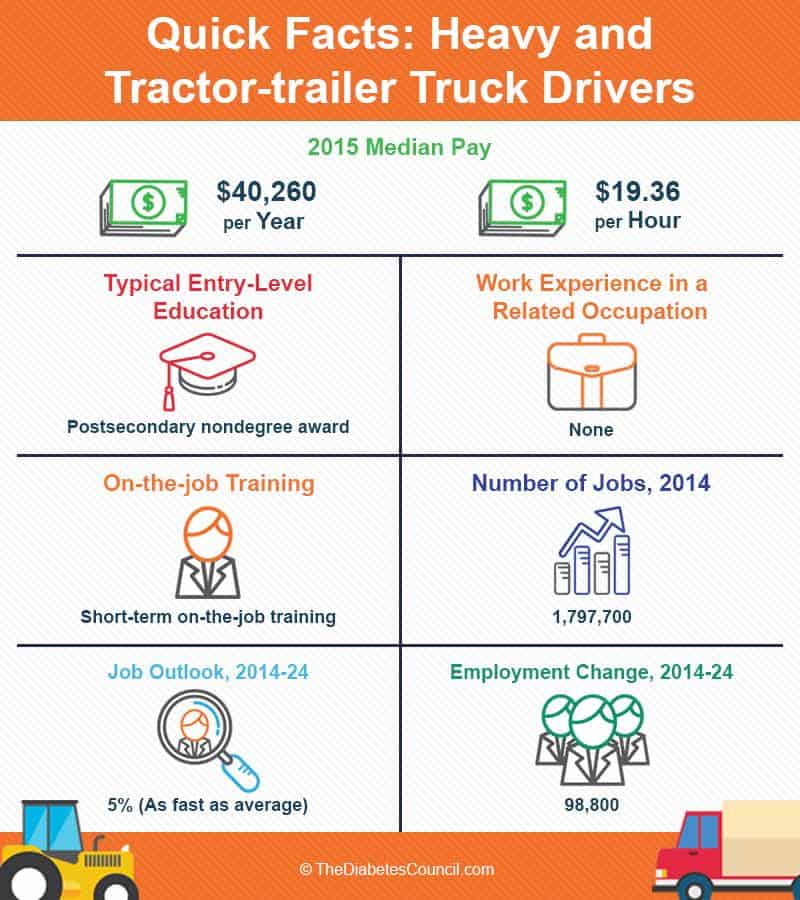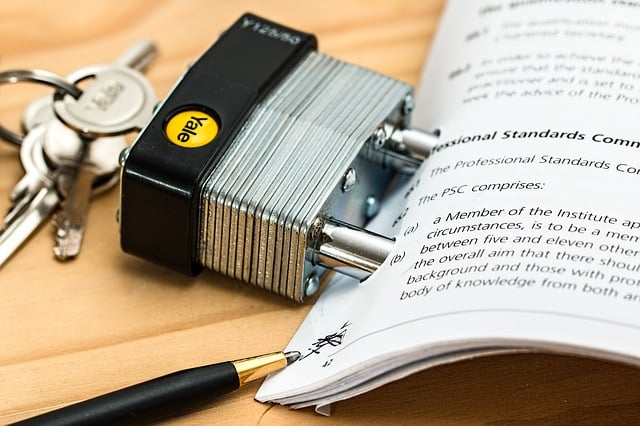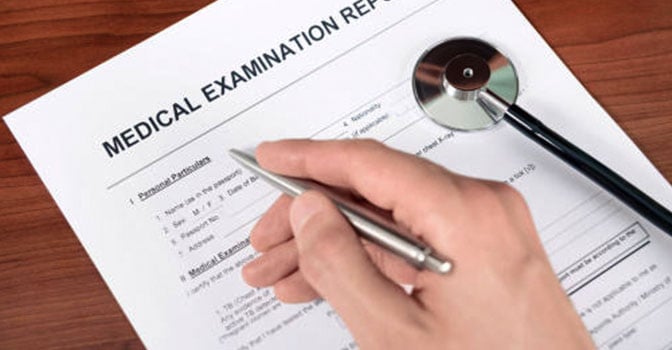In this article we will explore what it takes to get a commercial driver’s license with diabetes, and how to get an insulin waiver for Type 1 and Type 2 persons who use insulin. We will look at requirements for Type 1 vs. Type 2 diabetes.

We will look at insulin vs. non-insulin users. We will look at state vs. interstate CDL requirements. We will also look at the Federal Motor Carrier Safety Administration (FMCSA) diabetes waiver program, and how you can be evaluated to drive a commercial vehicle across state lines when you have diabetes and use insulin.
Contents
Intrastate guidelines for CDL with diabetes
If you want to work in the trucking industry only within your state, and you do not plan to cross any state lines, you can get approved to drive a commercial vehicle in your state. For drivers driving within state lines, you do not need to apply for the Federal Diabetes Exemption.
Likewise, you would not need to apply for the Federal Diabetes Exemption if you do not use insulin. Whatever rules and regulations your state has for holding a CDL with diabetes is what you have to follow for intrastate or interstate trucking.
It is important to know that most commercial driving will be considered interstate, not intrastate driving, even if you do not cross state lines. If you are carrying cargo or passengers to or from another state, this is also considered as interstate commercial driving. For information on intrastate commercial driving, check with your home state for CDL requirements and see if they are applicable to you.
They vary from state to state, with each state having its own regulations. You can look up the laws governing your state by visiting this page at the American Diabetes Association website, http://www.diabetes.org/living-with-diabetes/know-your-rights/discrimination/drivers-licenses/drivers-license-laws-by-state.html. You can type your home state in the search for laws and requirements for intrastate trucking where you live.
- Type 2 and no insulin: Can I get a CDL?
Persons with Type 2 diabetes that do not take insulin need only to follow their state guidelines related to obtaining and keeping their CDL. They will not need to file a Federal Diabetes Exemption, and can still cross state lines. However, if you find out that you are going to be on insulin, you will have to file for the Federal Diabetes Exemption.
- Type 1 Diabetes – Can I get a CDL?
Yes, you can get a CDL. Be advised that there are certain medical criterions that you will have to meet. You will need to file for the Federal Diabetes Exemption. We will discuss how you can file for the exemption and the requirements you must meet in detail further below. You will want to study these requirements, and make sure that you meet them before getting involved in the long, drawn out process of getting a Federal Diabetes Exemption.
History of Law from 2005
As part of a transportation bill from 2005, a person with Type 1 Diabetes who takes insulin is now able to drive in interstate commerce. This had not been possible before this law, and persons taking insulin were unable to be truckers. Although there are many requirements that the person must meet, it is possible.
Truckers are one of the unhealthiest segments of the population, due to unhealthy eating habits, irregular eating schedules, long hours and lack of exercise. Therefore, being a trucker with diabetes comes with its challenges. However, some feel that these challenges are worth the independence and opportunities that trucking the open roads of the United States provides.
The FMCSA started to provide assessments of those with Type 1 and Type 2 diabetes taking insulin for interstate trucking on a case-by-case basis as early as 2003, provided that they met all conditions for driving while taking insulin. The criterion is not as strict as one might think, keeping in mind that those with existing complications of diabetes, or those with an A1C that is high, generally above a 10, may not be able to go through the process.
The process is very long and can take up to 180 days or longer if they find that the applicant has left out information needed to make a confirmed assessment. Some sources have sited 9 months to 1 year of wait periods, due to back log of paperwork with the cumbersome process.
In 2003, there was something called the “3 year rule,” where persons taking insulin who were being assessed for interstate trucking had to have 3 years of experience in intrastate trucking. It was very hard to get this, because only certain states allowed drivers taking insulin to be employed in intrastate trucking. Also, not much trucking is really considered intrastate trucking, as stated above. This restrictive rule is no longer in effect, because it prevented almost everyone from obtaining an exemption.
Let’s explore the requirements for this in-depth and time consuming process that truckers taking insulin must go through to get moving.
I further recommend reading these informative articles:
Obtaining a FMCSA Diabetes Waiver
First, you can print the 12 page Federal Diabetes Exemption Program packet here: https://www.fmcsa.dot.gov/sites/fmcsa.dot.gov/files/docs/Diabetes_Exemption_Package0706.pdf
Jumping through federal hoops – what’s next?
For starters, an applicant for the Federal Diabetes Exemption or waiver with Type 1 diabetes will need to be taking their insulin for at least 2 months prior to applying for the exemption. A person with Type 2 diabetes must have been taking their insulin for one month.
A required physician evaluation that should be conducted by a licensed “medical examiner” is listed on the FMCSA’s National Registry. Other evaluations may include tests conducted by an endocrinologist and ophthalmologist or optometrist. In addition, the following is a list of medical criteria that must be met:
- The person with diabetes must not have had one or more hypoglycemic episodes in the past 12 months, or 2 or more occurrences in the past 5 years resulting in:
- Seizure
- Loss of Consciousness
- Need for Assistance from another person
- Period of Confusion
- The person with diabetes must not have signs of end organ damage including:
- Retinopathy
- Macular Degeneration
- Peripheral Neuropathy
- Congestive Heart Disease
- Stroke
- Peripheral Vascular Disease
- Kidney Failure1
The diabetes package should contain:
- Diabetes Exemption Application
- Quarterly Endocrinologist Evaluation Form for Already Exempted Drivers
- Annual Diabetes Assessment Package for Already Exempted Drivers
Medical Examination Requirements
The Department of Transportation (DOT) physical examination must be conducted by a licensed "medical examiner" listed on the Federal Motor Carrier Safety Administration (FMCSA) National Registry. The following may provide the DOT physical examination:
- doctors of medicine (MD)
- doctors of osteopathy (DO)
- physician assistants (PA)
- advanced practice nurses (APN)
- Doctors of chiropractic (DC).
Follow this link to find a medical examiner who is certified by the FMCSA to perform DOT physical exams: https://nationalregistry.fmcsa.dot.gov/NRPublicUI/Drivers.seam.
A DOT physical exam is valid for up to 24 months. The medical examiner may also issue a medical examiner's certificate for less than 24 months when it is desirable to monitor a condition, such as diabetes or high blood pressure. The Federal Diabetes Exemption is good for 1 year. A Medical Examiner's Certificate is issued if the medical examiner finds that the person with diabetes is physically fit to operate a commercial vehicle, and the applicant is given a copy of the certificate.
There are 57 screenings that a person with diabetes taking insulin injections must pass in order to obtain the Federal Diabetes Exemption from FMCSA. Once obtained, the Federal Diabetes Exemption is good for one year, although some medical exemptions may be good for 24 months. At the end of the year, if the person does not meet the criteria on re-application, they are then not allowed to operate a commercial vehicle for interstate trucking. As one’s diabetes worsens, or as short and long term complications arise, a trucker with diabetes taking insulin may find that they are unable to continue on their current career path.
Learn more about diabetes related issues in these articles:
If they are unable to meet the requirements for exemption each year, they may be faced with the reality of being pulled off the road due to worsening diabetes. This can cause great hardship for a trucker and their family, who may not have other means of sustaining their livelihood.
As of 2004, the DOT Medical Examinations that are administered to those obtaining a CDL for interstate trucking have become stricter. This is because a number of prior unmentioned medical conditions were added to the list of that could render a driver unsafe to be on the road. High blood pressure, sleep apnea, and of course, diabetes were on the list.
Persons with diabetes who wish to enter the trucking industry should ask themselves if they would be able to manage their disease with all of the challenges that comes with it while on the road. They should also prepare themselves for a possibility of being taken off the road due to worsening diabetes and acute or chronic complications that make driving a commercial vehicle unsafe. With organization and planning, life on the road as a diabetic taking insulin is possible.
In the event if or when truckers are taken off the road, they are put on FMLA. The Family Medical Leave Act protects them from losing their job for 12 weeks. However, because the Federal Diabetes Exemption takes up to 180 days, some truckers would have lost their jobs in the time between when their FMLA runs out, and the time when they obtain the waiver. It may be possible to seek help from the American Diabetes Association related to discrimination cases if jobs are lost while waiting on the Federal Diabetes Exemption.
A trucker’s fear of insulin
Recently, a trucker named Jason, came to me for diabetes education. Jason is a 54 year old Type 2 on 3 different oral medications that are all maxed out. He wanted to talk with educators about lifestyle changes that he could make to avoid getting put on insulin injections. He confessed that it was tough to drive a rig when you have to take insulin. He said the process was hard, and he knew others who could not make it through. However, he did not want to lose his income.
Because he was at the maximum with his oral medications, his doctor was pushing for the next step. Jason was clearly trying to avoid insulin because he was a truck driver. After going on an intensive diet and exercise regimen, he was able to get his A1C down to a 9.8. Still, he is looking at his diabetes worsening due to having had Type 2 for 12 years. As his beta cells die out over time, and there is a worsening of his condition, he will likely not be able to stay on the interstate roads for much longer.
Are many truck drivers afraid to take insulin for the fear of being unable to drive in interstate commerce? It seems that this may be the case, as evidenced by Jason’s story. This may be the only life and career a person knows, and switching careers late in life, as we all know, can be very difficult. Hopefully with good self-management skills being taught, diabetes educators can help in keeping America’s dedicated trucking industry rolling, and help Jason and others like him “keep on truckin on.’”
While working on this piece, I found some frequently asked questions.
Is it possible to drive a truck for interstate commerce if I have Type 2 diabetes that does not require insulin?
Yes, if you meet all the requirements for a CDL in your home state, you do not have to do anything else. You will not need to apply for the Federal Diabetes Exemption through the FMCSA.
Can I work in the interstate trucking industry if I have Type 2 diabetes and I use insulin?
You may be able to work in the interstate trucking industry if you meet certain requirements, but you will need to apply for the Federal Diabetes Exemption through the FMCSA. See above under, “Obtaining an FMCSA Diabetes Waiver”.
If I have Type 1 diabetes, can I work in interstate trucking?
You may be able to work in the interstate trucking industry if you meet certain requirements, but you will need to apply for the Federal Diabetes Exemption through the FMCSA. See above under, “Obtaining an FMCSA Diabetes Waiver”.
If I am a truck driver with diabetes, what can I do to better manage my diabetes on the road?
You can opt for healthier options like lean meats, vegetables and salads instead of fried food at truck stops, keep a cooler of healthy snacks on hand, and get your exercise by stopping for a 15-20 minute walk every few hours. Alternatively, you can keep up with your exercises by keeping exercise equipment in the back of the truck. You can visit this Pinterest page to read blogs about the various exercise equipment and routines for truck drivers: https://www.pinterest.com/pin/95138610849133531/.
Get out of the cab frequently to stretch to increase circulation. Keep needed supplies and testing strips at all times to help you manage on the road. You can visit one of DOT’s many outreach clinics for truck drivers available all over the United States. They offer the DOT physical examinations. Visit the map to pick a physical location here: http://www.teamcme.com/locations/cdl-physicals/.
We invite our readers to let us know what they think about this article. Do you have anything that you would like for us to add to this article? Do we stand corrected on any of the information that we presented in this article? We also welcome any comments or stories from our readers. Please let us know how diabetes has affected your life as a trucker.
We would like to hear from you about your difficult experiences as a trucker with diabetes. We are particularly interested in stories related to how you overcame any difficulties presented by your diabetes while you are on the road. Are there any innovative methods or tricks that you do to keep self-managed while on the road that be could of help to others? Let us hear from you in the comments section below.
Dan's Story
A 46 year old man with Type 2 diabetes came to diabetes education classes with an A1C of 11.7. He stated that he needed help to get his diabetes under control so that he could continue to drive a commercial vehicle. Let’s just call him Dan. Dan had an insulin waiver, but he was taken off the road because his A1C had increased to over 10. He had to get needed diabetes education, and get his A1C down below 10 quickly or he would lose his job as an interstate trucker.
Dan is very motivated, due to the situation threatening his income and livelihood. He did not mind “camping out” in the diabetes education classroom until he learned what he needed to in order to keep his Commercial Driver’s License and get back in the seat of the big rig. We gave Dan a big “10-4 good buddy,” and quickly started to tailor some educational interventions that would help Dan in overcoming his recent difficulty with elevated blood sugars.
We wanted to get at the root of why his blood sugars were increasing. We needed to look at what we could do about his worsening diabetes to get him back behind the wheel. Copy? We did not want him flipped over on the road, “greasy side up,” as it goes in CB slang (Citizens Band radio).
To make sure this trucker is not a “dream weaver,” or a sleepy driver, we needed to look at what was going on with his life on 18 wheels. After doing a comprehensive diet recall, it was determined that he spent a large majority of his time on the road eating greasy, truck stop food. While driving down the interstate, he would often grab some of the fast food, fried fare variety, and take it in the cab with him to eat. He skipped meals and snacks in order to get to where he was going faster and sooner.
Dan often ran out of strips for his glucometer, and would not check his blood sugar for days at a time. He agreed to begin regular checks, and keep plenty of supplies in his cab. Dan generally got no exercise, and he would drive a long distance without getting out and stretching or moving around. He did get one 30 minute walk in per week with his wife, and a few healthier meals at home when he was not travelling.
In order to determine his nutritional intake, we took an inventory of the restaurants that he would make stops at while on route. We looked at truck stop and fast food menus of all kinds, and helped him learn to pick healthier options wherever he made a stop.
We suggested that he pack a cooler of healthy snacks to take with him on the road, and also prepared a list of his favorite snacks for him to pick up to plan for the day when he would hit the road again with an A1C of less than 10. He also learned to count his carbohydrates. Additionally, since he would be home for 3 months until his A1C went down, we looked at his meal options at home to help him get back out on the road.
At home, he agreed to take 20-30 minute walks, 5 days per week along with his wife following their evening meal. We looked up cab exercise equipment for him, and he picked out some equipment that he would order for his 18 wheeler. In this way, when he makes a stop, he could go in the back of the truck and get a few minutes’ worth of exercise.
He also agreed that he would park his truck farther away from where he is supposed to go in order to get a few more steps in. He was given a few minutes of strengthening and stretching training to do every 2 hours, and was encouraged to make stops in order to perform these exercises which would help increase his circulation and boost activity.
One of the biggest problems that Dan had was that he regularly consumed large amounts of sweet iced tea and sugary sodas. He agreed to stop and instead switch to healthier options such as water and diet drinks. This, along with the other several changes to his diet and exercise routine, is probably the single biggest factor that brought his A1C down and allowed him to continue to hold a commercial driver’s license (CDL) and work for the trucking company.
He not only dropped his A1C to less than 10, but was also able to get his A1C down to 8.8. His goal is to get it down to less than 7. He is aware that he will be living healthier with diabetes if his A1C is less than 7. In just a span of three months, the changes that Dan made in his lifestyle made a big difference not only in his physical condition but also allowed him to continue working in the trucking industry.
TheDiabetesCouncil Article | Reviewed by Dr. Sergii Vasyliuk MD on October 26, 2022
References











